Abstract
The purpose of the present series of experiments was to measure and compare the effects of an anticholinergic drug (isopropamide) and an antagonist of the histamine H2 receptor (metiamide) on food-stimulated acid secretion. Patients with duodenal ulcers were stimulated by a steak meal, and acid secretion was measured by in vivo intragastric titration. The largest dose of isopropamide that can be taken clinically without producing intolerable side effects (maximum tolerated dose) suppressed food-stimulated acid secretion by 35%. By contrast, metiamide in a 400-mg dose produced no side effects and almost completely abolished food-stimulated acid secretion. A dose-response curve revealed that a 50-mg dose of metiamide was required to suppress food-stimulated acid secretion by 50%. Further studies showed that metiamide and isopropamide are additive in suppressing food-stimulated acid secretion, and that metiamide has no effect on serum gastrin concentration or on gastric emptying.
Full text
PDF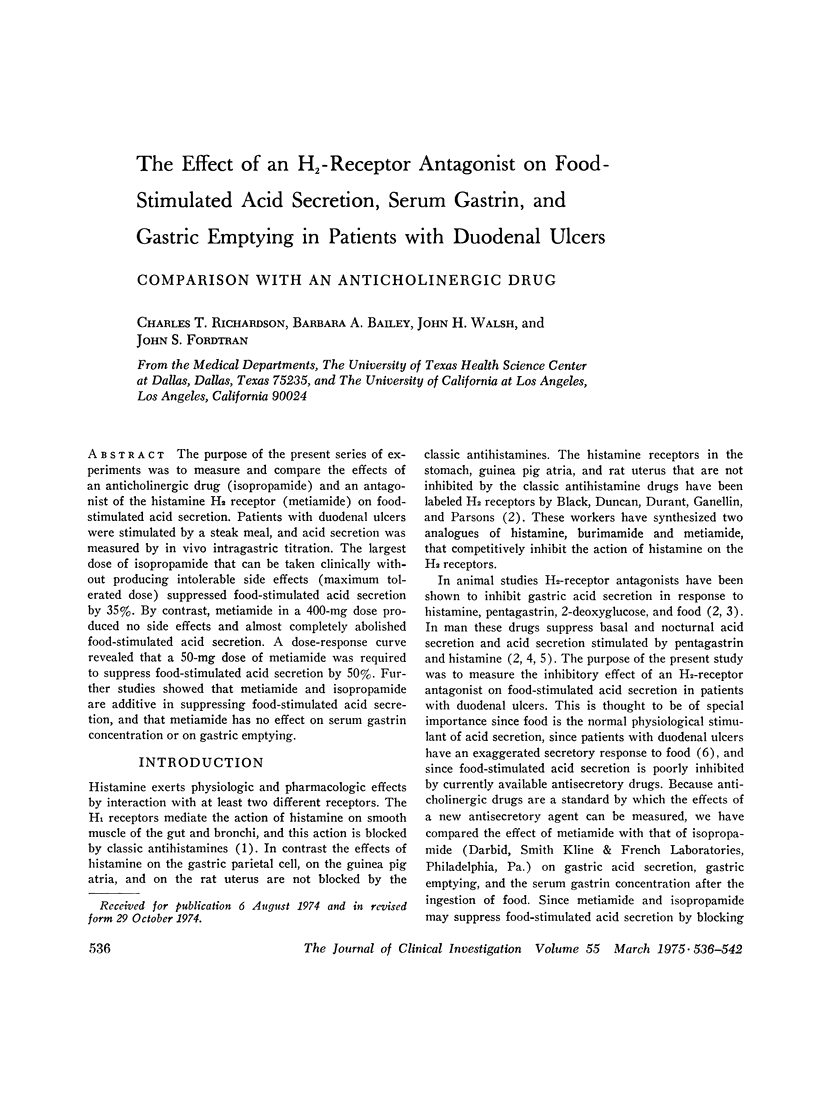
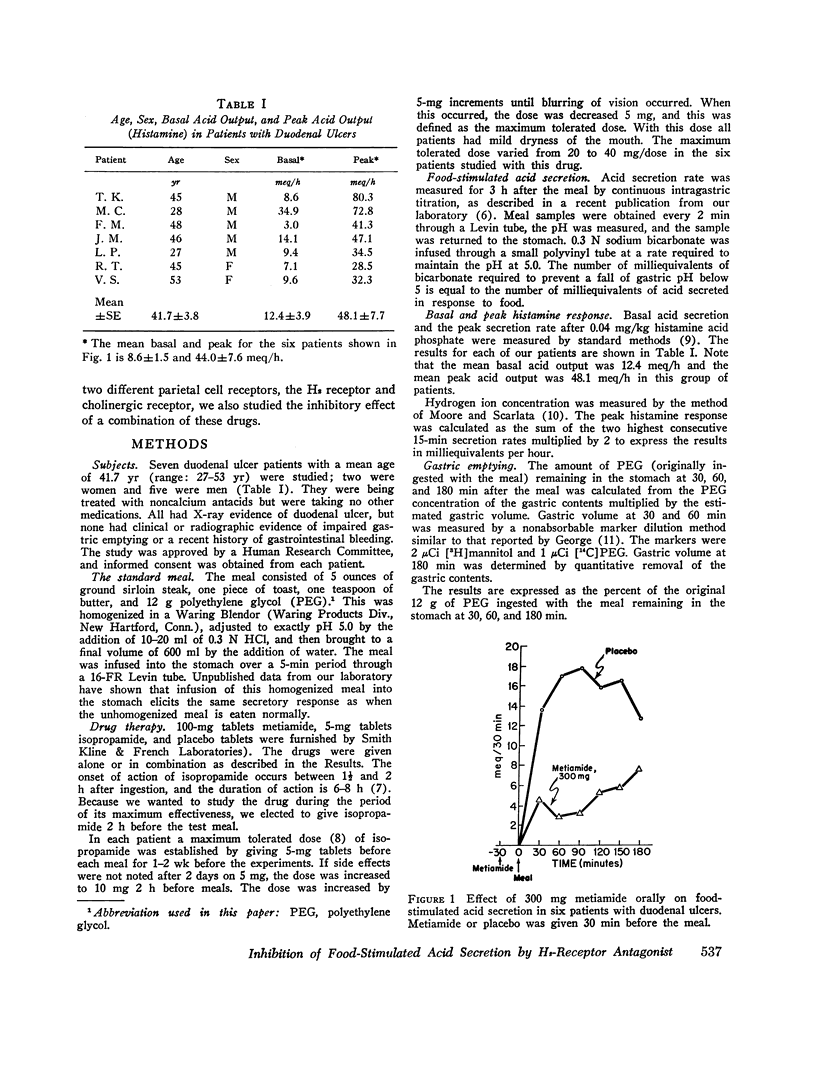
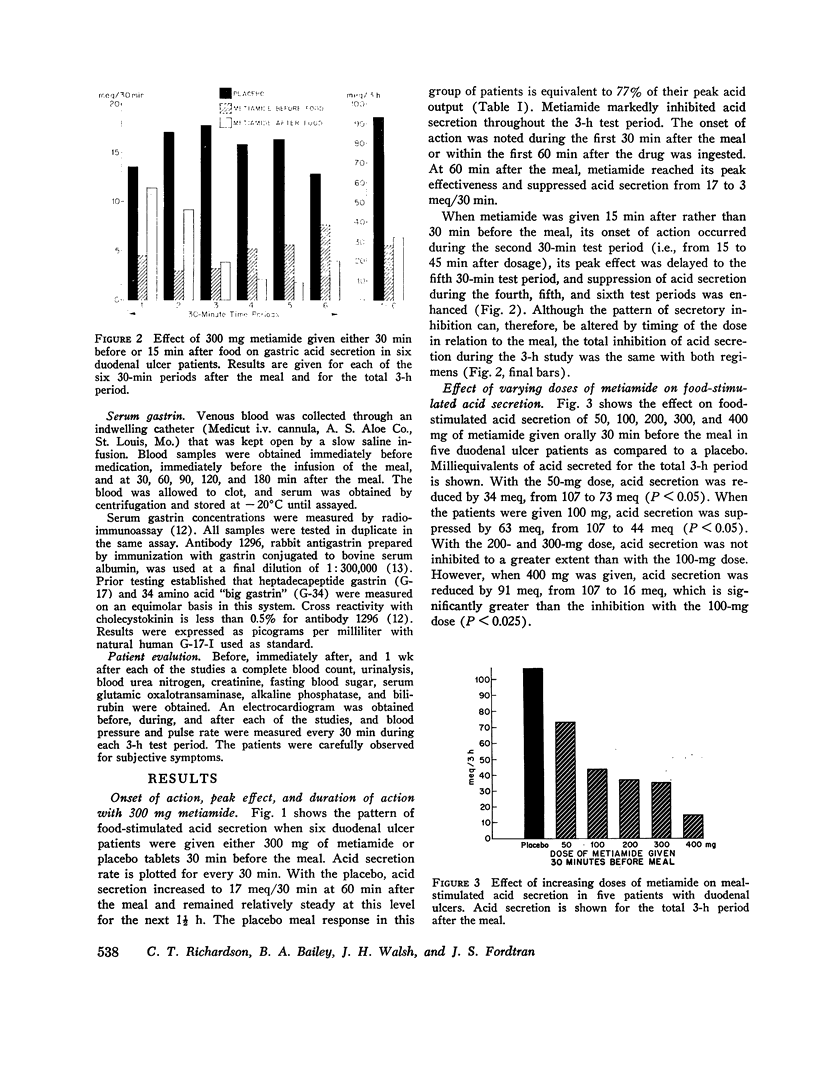
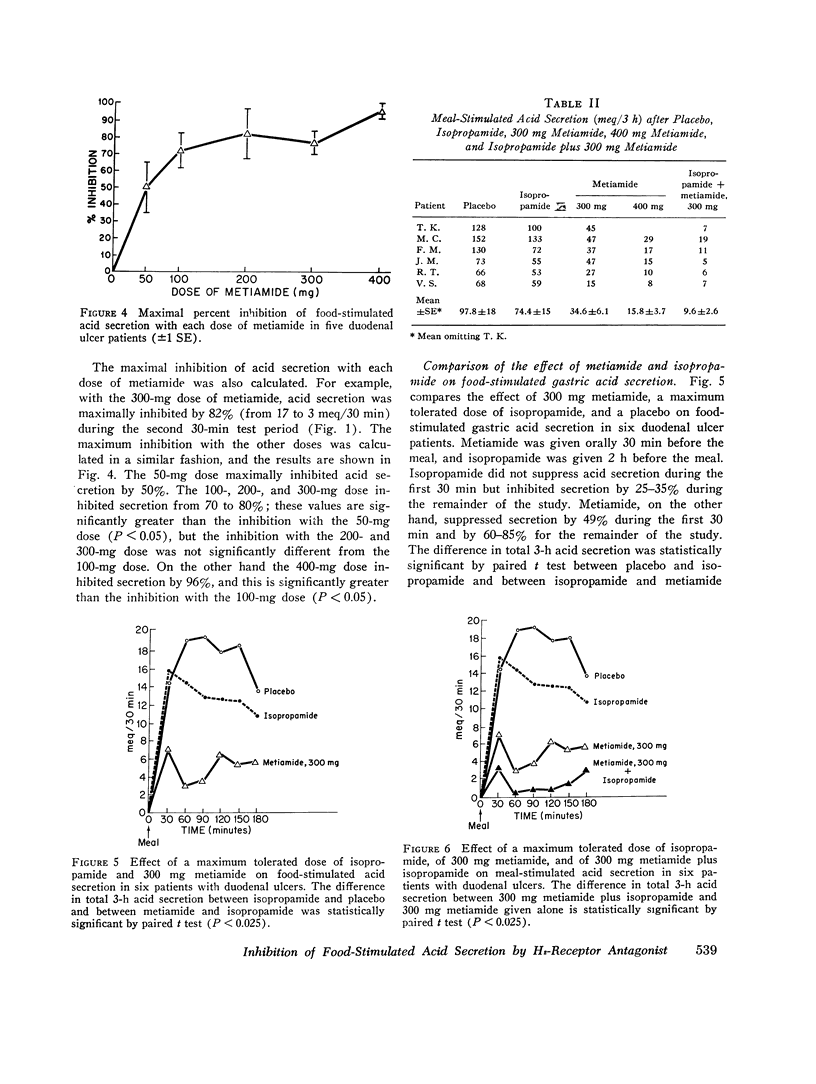
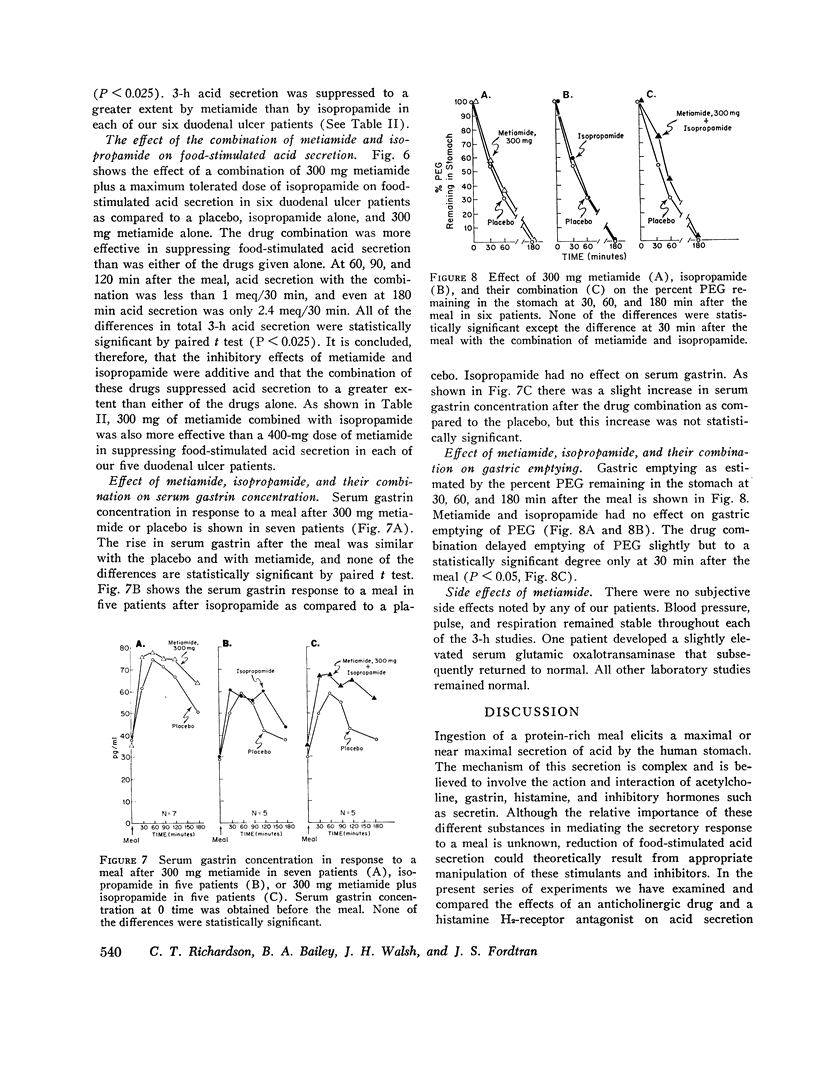
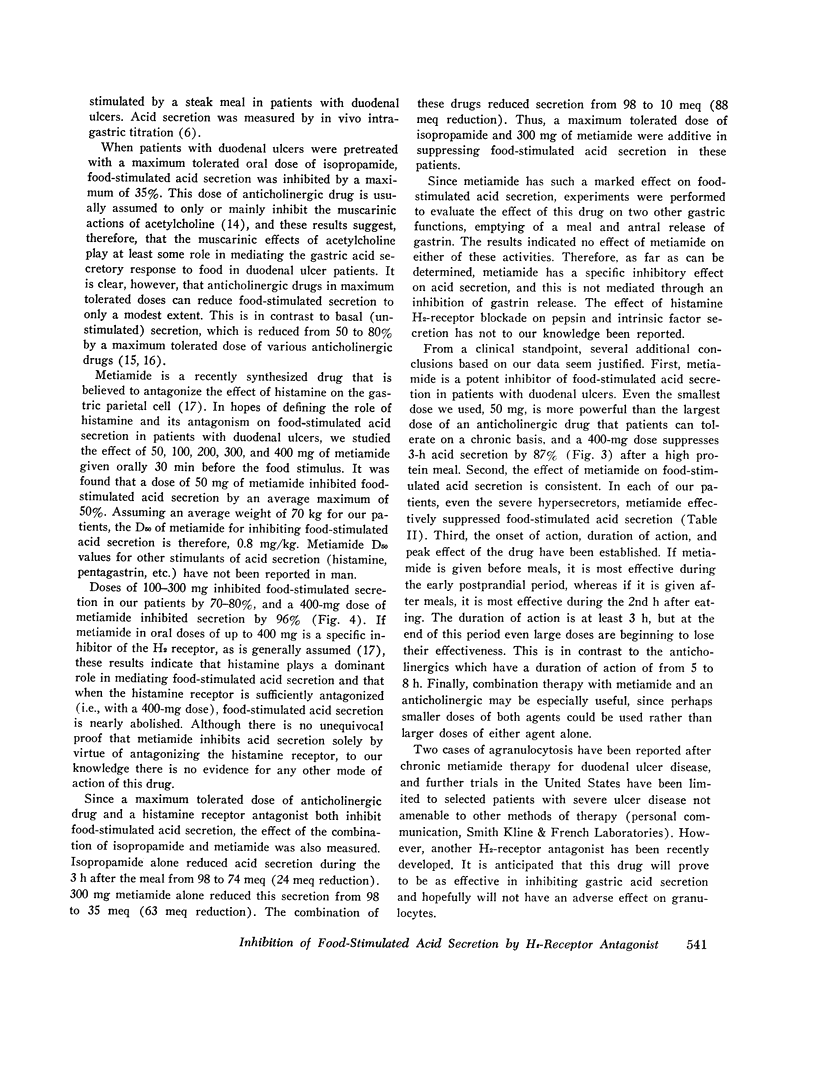
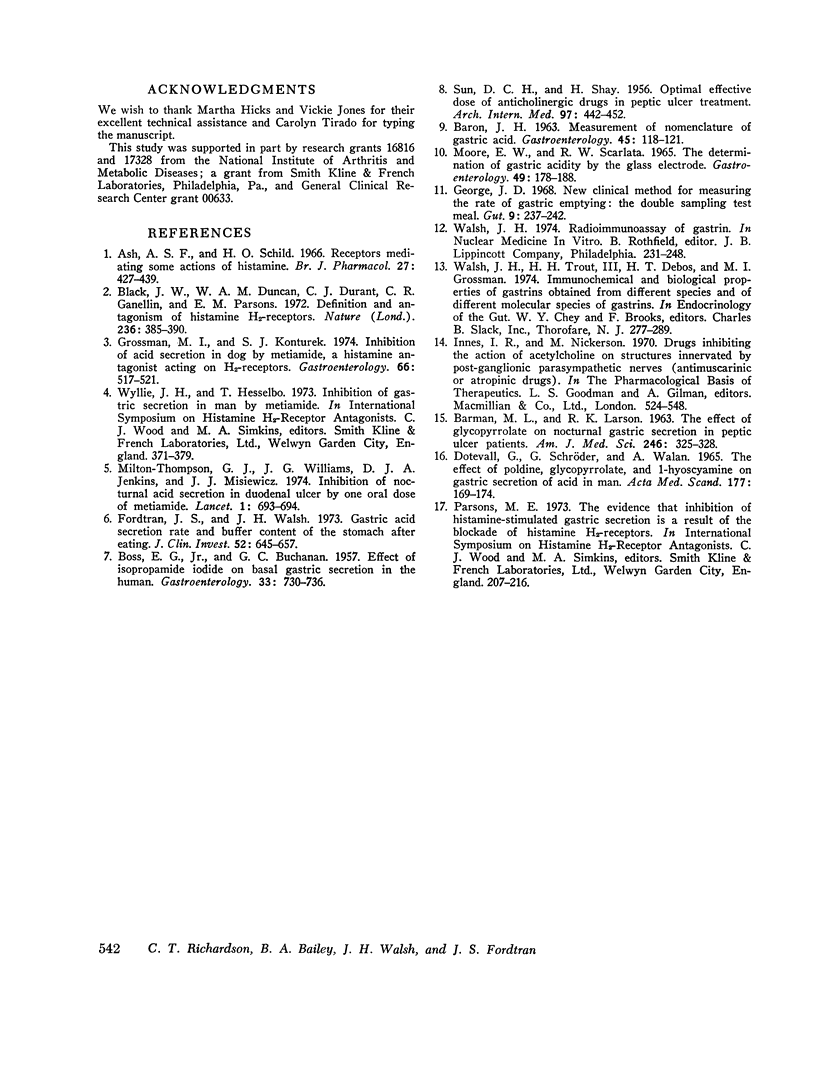
Images in this article
Selected References
These references are in PubMed. This may not be the complete list of references from this article.
- Ash A. S., Schild H. O. Receptors mediating some actions of histamine. Br J Pharmacol Chemother. 1966 Aug;27(2):427–439. doi: 10.1111/j.1476-5381.1966.tb01674.x. [DOI] [PMC free article] [PubMed] [Google Scholar]
- BARMAN M. L., LARSON R. K. THE EFFECT OF GLYCOPYRROLATE ON NOCTURNAL GASTRIC SECRETION IN PEPTIC ULCER PATIENTS. Am J Med Sci. 1963 Sep;246:325–328. doi: 10.1097/00000441-196309000-00011. [DOI] [PubMed] [Google Scholar]
- BOSS E. G., Jr, BUCHANAN G. C. Effect of isopropamide iodide on basal gastric secretion in the human. Gastroenterology. 1957 Nov;33(5):730–736. [PubMed] [Google Scholar]
- Black J. W., Duncan W. A., Durant C. J., Ganellin C. R., Parsons E. M. Definition and antagonism of histamine H 2 -receptors. Nature. 1972 Apr 21;236(5347):385–390. doi: 10.1038/236385a0. [DOI] [PubMed] [Google Scholar]
- DOTEVALL G., SCHROEDER G., WALAN A. THE EFFECT OF POLDINE, GLYCOPYRROLATE AND 1-HYOSCYAMINE ON GASTRIC SECRETION OF ACID IN MAN. Acta Med Scand. 1965 Feb;177:169–174. doi: 10.1111/j.0954-6820.1965.tb01819.x. [DOI] [PubMed] [Google Scholar]
- Fordtran J. S., Walsh J. H. Gastric acid secretion rate and buffer content of the stomach after eating. Results in normal subjects and in patients with duodenal ulcer. J Clin Invest. 1973 Mar;52(3):645–657. doi: 10.1172/JCI107226. [DOI] [PMC free article] [PubMed] [Google Scholar]
- George J. D. New clinical method for measuring the rate of gastric emptying: the double sampling test meal. Gut. 1968 Apr;9(2):237–242. doi: 10.1136/gut.9.2.237. [DOI] [PMC free article] [PubMed] [Google Scholar]
- Grossman M. I., Konturek S. J. Inhibition of acid secretion in dog by metiamide, a histamine antagonist acting on H2 receptors. Gastroenterology. 1974 Apr;66(4):517–521. [PubMed] [Google Scholar]
- MOORE E. W., SCARLATA R. W. THE DETERMINATION OF GASTRIC ACIDITY BY THE GLASS ELECTRODE. Gastroenterology. 1965 Aug;49:178–188. [PubMed] [Google Scholar]
- Milton-Thompson G. J., Williams J. G., Jenkins D. J., Misiewicz J. J. Inhibition of nocturnal acid secretion in duodenal ulcer by one oral dose of metiamide. Lancet. 1974 Apr 20;1(7860):693–694. doi: 10.1016/s0140-6736(74)92901-8. [DOI] [PubMed] [Google Scholar]
- SUN D. C., SHAY H. Optimal effective dose of anticholinergic drug in peptic ulcer therapy. AMA Arch Intern Med. 1956 Apr;97(4):442–452. doi: 10.1001/archinte.1956.00250220062006. [DOI] [PubMed] [Google Scholar]
- VARDIVIA-BARRIGA V., FELDMAN A., ORELLANA J. MEASUREMENT AND NOMENCLATURE OF GASTRIC ACID. Gastroenterology. 1963 Jul;45:118–121. [PubMed] [Google Scholar]



